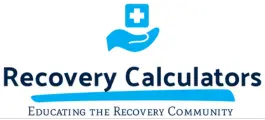Alcohol withdrawal can be a challenging phase in the journey towards sobriety, and accurately assessing its severity is crucial for effective treatment. That’s where the CIWA (Clinical Institute Withdrawal Assessment for Alcohol) scale comes into play. This tool is designed specifically to evaluate the severity of alcohol withdrawal, providing healthcare professionals with a quantitative measure to guide treatment decisions. By identifying the symptoms and their intensity, the CIWA scale enables us to tailor treatment approaches that are as individual as the people we support.
Our focus on tools like the CIWA scale highlights our commitment to finding the best recovery paths for those dealing with alcohol dependence. This medical calculator not only enhances our ability to manage withdrawal symptoms but also supports our larger goal of offering comprehensive recovery solutions. Through detailed assessments and personalized care plans, we strive to provide stability and hope to those embarking on a recovery journey. Understanding and implementing the CIWA scale is a critical step in ensuring the safety and effectiveness of alcohol withdrawal management, aligning with our mission to empower individuals in achieving lasting sobriety.
What is the CIWA Scale and How Does It Work?
The Clinical Institute Withdrawal Assessment of Alcohol Scale, better known as CIWA, is a pivotal tool in our arsenal for managing alcohol withdrawal. This scale is specifically designed to offer a standardized assessment of withdrawal severity, thereby guiding treatment decisions. Utilizing CIWA, we detect the presence and intensity of alcohol withdrawal symptoms, ranging from nausea and tremors to agitation and auditory disturbances.
The process involves a brief questionnaire which is administered by a trained professional who can score each symptom based on its severity. The summation of these scores determines the overall severity of withdrawal, allowing us to provide a treatment that is both appropriate and proportional to the patient’s needs. By systematically measuring symptoms, CIWA helps us identify potential complications early and administer necessary interventions swiftly and efficiently.
Key Symptoms Measured by the CIWA Protocol
The CIWA protocol meticulously evaluates a range of symptoms to determine withdrawal severity. Key symptoms include agitation, anxiety, auditory disturbances, visual hallucinations, headaches, sweating, nausea, and tremors, to name a few. Each of these symptoms is scored on its own scale, reflecting the gradation of severity from mild to severe.
For instance, tremors are measured by observation — from the absence of tremors to severe, uncontrollable shaking. Similarly, hallucinations are assessed based on a patient’s reported experiences. This detailed attention to various symptoms ensures that our treatment approach addresses the specific needs of each individual. It’s crucial for us not only to treat the withdrawal but to understand how these symptoms are experienced by the patient, enabling us to provide supportive care that is empathetic and effective.
Implementing CIWA in Clinical Settings: Best Practices
Implementing the CIWA scale in clinical settings requires a structured approach to ensure accuracy and effectiveness in treatment. We emphasize training our healthcare professionals comprehensively, as the accuracy of CIWA relies significantly on the evaluator’s skill and experience. Each staff member is taught how to correctly administer the scale, interpret its results, and apply them to patient care. This includes understanding each symptom’s specific indicators and how to rate them appropriately.
Moreover, consistency is key in our application of the CIWA protocol. To maintain this, regular review sessions are held to assess the uniformity of the application of the CIWA scale across different practitioners within our facility. By monitoring and calibrating our approaches continually, we assure a high standard of care and effective management of alcohol withdrawal symptoms. These practices not only help in mitigating the risks associated with withdrawal but also ensure that treatment decisions are data-driven and tailored to individual needs.
The Importance of CIWA in Personal Recovery Plans
The CIWA scale is not just a tool for acute intervention but also a critical component in the formulation of personal recovery plans. Understanding the severity and nature of withdrawal symptoms allows us to design recovery plans that address both immediate detoxification needs and long-term treatment goals. This personalized approach ensures that the support we provide adjusts over time to reflect each client’s evolving needs as they transition from detox into recovery.
Incorporating CIWA into ongoing care plans helps clients and their families understand the recovery process more clearly. It also sets clear, measurable milestones that clients can achieve, instilling a sense of progress and motivation. Using the CIWA scale, we can dynamically adjust treatment plans in response to the changing severity of withdrawal symptoms, making the recovery journey as smooth and effective as possible.
At Recovery Calculators, we are dedicated to providing our clients with the tools and support they need to successfully navigate the complexities of alcohol withdrawal and recovery. By using the CIWA scale, we ensure that every aspect of treatment is grounded in careful assessment and tailored intervention. Contact us today to learn more about our alcohol withdrawal calculator.


